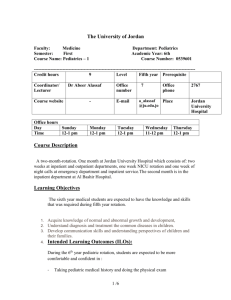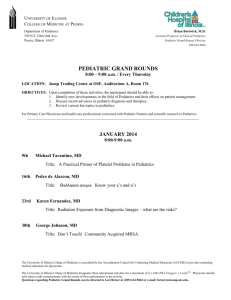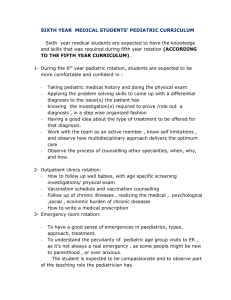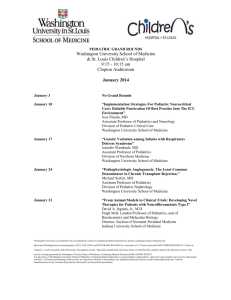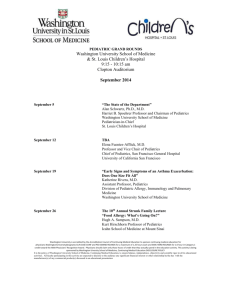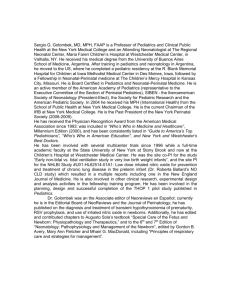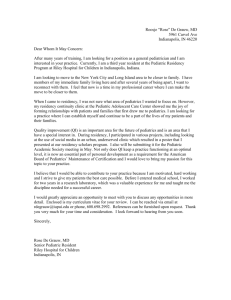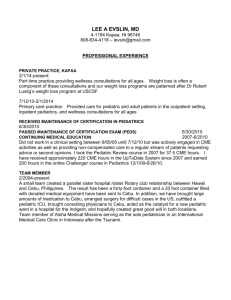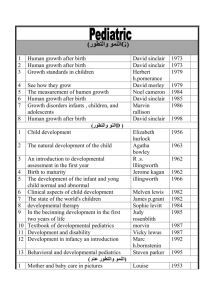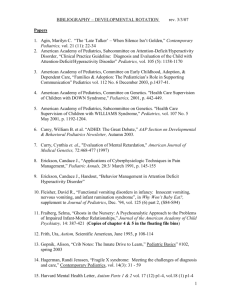ILOs 5th Year Pediatrics - Faculty Members Websites
advertisement
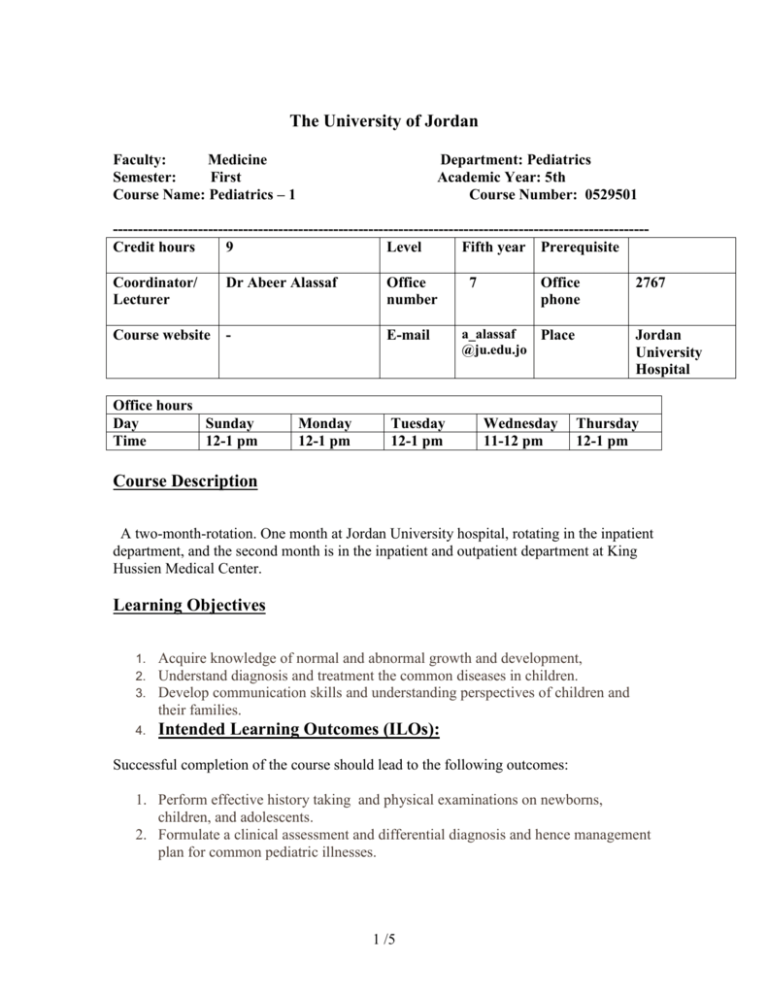
The University of Jordan Faculty: Medicine Semester: First Course Name: Pediatrics – 1 Department: Pediatrics Academic Year: 5th Course Number: 0529501 ----------------------------------------------------------------------------------------------------------Credit hours 9 Level Fifth year Prerequisite Coordinator/ Lecturer Dr Abeer Alassaf Office number Course website - E-mail Office hours Day Sunday Time 12-1 pm Monday 12-1 pm Tuesday 12-1 pm 7 Office phone a_alassaf Place @ju.edu.jo Wednesday 11-12 pm 2767 Jordan University Hospital Thursday 12-1 pm Course Description A two-month-rotation. One month at Jordan University hospital, rotating in the inpatient department, and the second month is in the inpatient and outpatient department at King Hussien Medical Center. Learning Objectives 1. 2. 3. Acquire knowledge of normal and abnormal growth and development, Understand diagnosis and treatment the common diseases in children. Develop communication skills and understanding perspectives of children and their families. 4. Intended Learning Outcomes (ILOs): Successful completion of the course should lead to the following outcomes: 1. Perform effective history taking and physical examinations on newborns, children, and adolescents. 2. Formulate a clinical assessment and differential diagnosis and hence management plan for common pediatric illnesses. 1 /5 3. Understanding of basic concepts of child nutrition, immunizations, and development. 4. Develop a professional approach in communicating with pediatric patients and their parents. Teaching/Learning Methods Teaching Method Lectures and Discussions: Homework and Assignments: Projects: Presentation ILO/s Understanding of common pediatrics topics. Acquire skills of looking for information and apply it in case management through problem based learning Acquire skills of presenting common pediatric topics effectively. 2 /5 Course Contents Major topics in pediatrics: I. Growth Demonstrate ability to plot accurately height, weight, and head circumference measurements in a growth chart. Discuss the significance of growth percentiles, with particular attention to an appreciation of why growth is a good index of health. Discuss the adverse effects on growth in intrauterine factors, malnutrition, maternal deprivation and social/cultural factors. II. Development Describe the developmental changes that occur as the preterm baby matures. Identify and discuss major developmental milestones and developmental assessment. Discuss at least one developmental disorder. Discuss the concept of cognitive and emotional maturation. III. Health Maintenance Discuss the importance of "health maintenance" or well-child visits. State the recommended schedule for well-child visits for ages from birth to 18 years, and list ideas for anticipatory guidance for each age. List the routine schedule of childhood immunizations and which vaccines are given, their common side effects and contraindications to their administration. List when lead levels, blood pressure checks, vision testing and hematocrits are recommended. IV. Nutrition Describe the importance and benefits of breast feeding. Counsel and provide emotional support a breastfeeding mother. Describe what constitutes a normal diet at different age groups and list the caloric requirements for growth at different ages. Describe common nutritional disorders in the US including iron deficiency anemia and obesity. State common food formulas for infants and their use and limitations. Describe the causes of failure to thrive. V. Fluids and Electrolytes Recognize and clinically evaluate dehydration. 3 /5 Write maintenance fluid orders for any pediatric patient with normal renal function. Write fluid orders (both intravenous and oral) for uncomplicated gastroenteritis. Describe basic physiologic principles and apply them in the management of acute dehydration and acute metabolic acidosis. VI. Common Pediatric Illnesses The following list identifies the problems that commonly prompt patients to seek medical care (i.e. presenting complaints or symptom complexes). Each complaint, diagnosis, physical finding/ laboratory test result (problem) is accompanied by a list of the most common related diagnoses as well as a list of less common but significant other diagnoses that may need to be considered. Although more rare conditions may occasionally need to be considered, they are not included in this core list. Evaluation Evaluation Point % Date OSCE Exam 30 End of the 2-moth-rotation Evaluation 20 End of each month Final Exam 50 May/2014 Main Reference/s: Nelson Textbook of Pediatrics, 19th edition, by R. Kliegman et al. References: 1. Nelson Essentials of Pediatrics, 6th Edition, by K Markdante. 2. Zitelli Atlas of Pediatric Physical Diagnosis, 4th Edition. 3. Harriet Lane Handbook of Pediatrics, 17th Edition. 4. Smith’s Recognizable Patterns of Human Malformations, 6th Edition. 4 /5 Intended Grading Scale 0-39 45-49 50-54 54-69 60-64 65-69 70-73 74-76 77-80 81-84 85-89 90-100 F DD D+ CC C+ BB B+ AA Notes: Concerns or complaints should be expressed in the first instance to the module lecturer; if no resolution is forthcoming, then the issue should be brought to the attention of the module coordinator (for multiple sections) who will take the concerns to the module representative meeting. Thereafter, problems are dealt with by the Department Chair and if still unresolved the Dean and then ultimately the Vice President. For final complaints, there will be a committee to review grading the final exam. For more details on University regulations please visit: http://www.ju.edu.jo/rules/index.htm 5 /5
